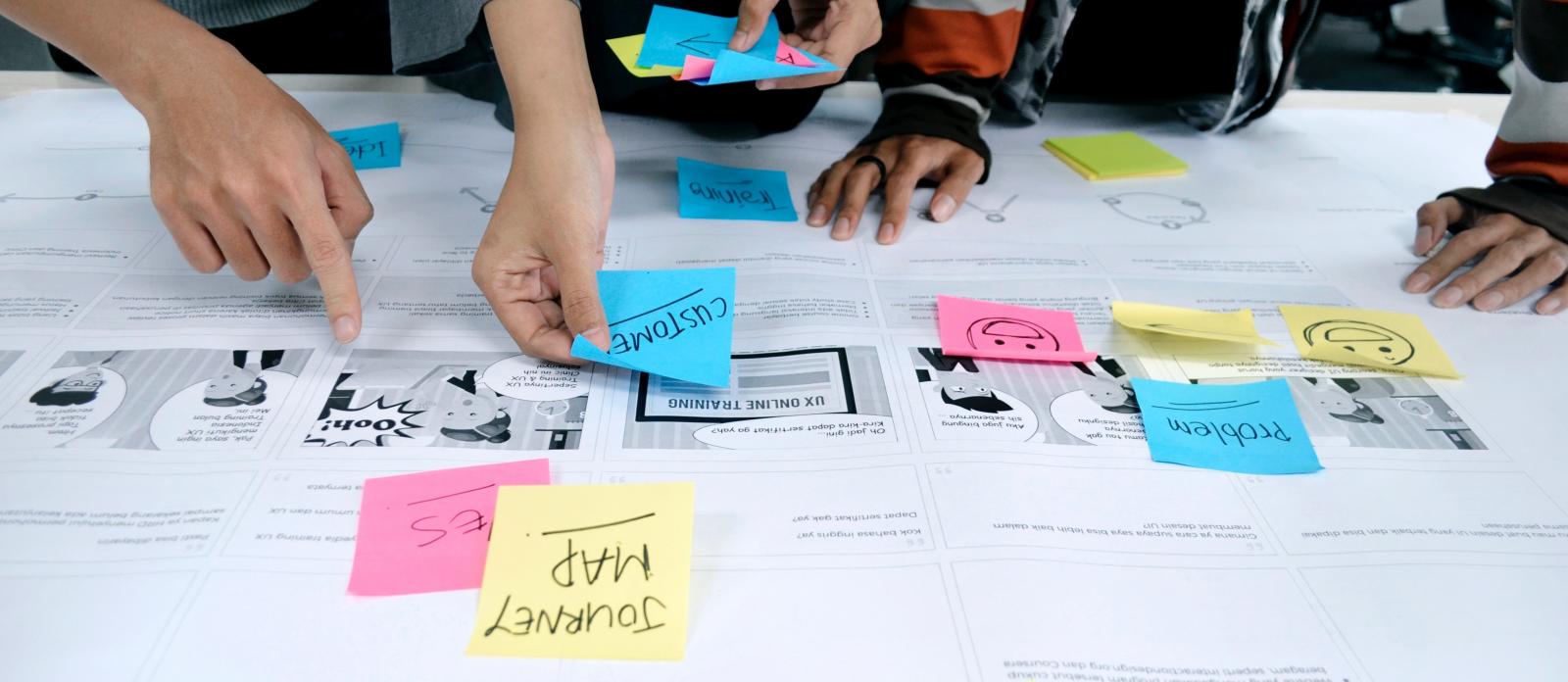
Breaking out of legacy, nine lessons for Business Leaders (Part 2)
4. You need to REALLY understand your customers
When undertaking a legacy transformation, it’s important to look outward to your customers' needs as much as it's important to look inwards at what you want to be as a business.
However, the harsh reality is, what you think your customers want may not be right. One of the things successful enterprise transformations do well is use evidence and data to drive decisions about what their customers need and want from their organization (now and into the future).
It’s easy to get wrapped up in assuming your customers want the same things from you as they always have. And it's also easy to back your own assumptions up with confirmation bias. To get the real picture of your customers’ needs, you must invest time and budget to ensure you research and capture data about your customers and then use this research and information captured to make data-led decisions on what your customers need for the future — rather than just using pure sentiment and guesswork based on what they wanted in the past.

To fully understand your customers’ behavior, to drive change and innovation to focus on their needs and pain points — while also keeping an eye on disruptors in your marketplace — you need to ask yourself some fundamental questions:
- As a senior executive, when was the last time you directly engaged with a variety of your customers? When did you last visit your bank branches, retail stores or other customer-facing areas?
- Does your business capture and make data-driven decisions about your customers? What about other decisions across your business?
- Do you assume to know what your customers want? Or do you ask them and then capture data to back that up (or disprove it!)?
- Do you regularly engage your customers as a business and ask them for feedback and input?
When given the chance to transform a legacy part of the business, successful organizations take the opportunity to actually ‘modernize’ and not just create a replica in newer technology. Doing the same thing with modern UI/ CX, might result in short-term performance improvements and lower costs — but this isn’t sustainable. Those gains quickly become ‘table stakes’ and in the long term, actually you’re going to see sub-optimal performance because you haven’t really transformed. Successful companies use the opportunity to better leverage all their competitive differentiators and assets as part of a transformation to maximize impact.
This includes not just knowing today's customers better but preparing for the new customers in the future, or even new markets you want to expand into.
One of the most critical assets sitting squarely in this is the role of ‘data’. Already data is being described as the greatest asset of all [Economist: ‘The world’s most valuable resource is no longer oil, but data']. Many companies are looking to make their data and data access work harder for them and drive greater business value.
In fact, this is now moving beyond the table stakes mentioned above. A transformation today that fails to incorporate data strategically could be viewed as a failed transformation or at the very best a sub-optimal transformation.
There are simple test signals that would drive absorbing data as part of your transformation:
- Will your transformation automatically allow you to have business intelligence that previously cost you to interrogate: i.e. plug-in software licenses, export/import through manual processes or using external consultants?
- Do you have an internal data group that has long waiting times for requests for reports or insights? Do you struggle to get timely data to inform business decisions?
- Do you need your analytics or insights to be more accurate, frequent or accessible than today?
- Do your competitors have a data-driven approach which is faster than yours?
- Will the ability to connect disparate systems through transformed services give you holistic views that are currently diverse and time consuming to acquire?
- Can you accept the above advantages will be worth unplanned or additional costs as part of the transformation?
This last point is important because big benefits, no matter how compelling, are rarely free. It’s easy to try and undertake a transformation for the lowest cost — it is after all nearly always a major piece of ‘exceptional items’ on a P&L statement (unless your organization undertakes different transformations every year). However, the lowest cost rarely delivers the highest value or greatest future-proofing.
As a consultancy advising on strategic transformations for our major clients, Thoughtworks is purposely transparent about benefits, opportunities and costs for transformations, especially those incorporating data into change thinking. We’ve seen the powerful impact when this is done correctly and sometimes underwhelming reviews when a transformation executed well has not taken the opportunity to maximise on a real data strategy.
As you embark on your transformation journey the critical question to ask yourself is: do we want just a better version of what we always had before? Or do we want to take this opportunity to reimagine the business we can be?
6. To do more, do less
In order to do what you want, what are you going to stop?
Working on too many “strategic” or “critical” things at once is a killer for actually getting anything done. Some of the most successful transformation and legacy replacement programmes we’ve been on have been the number one priority for the business, and almost to a point they did little more than “keep the lights on” for most of the other work during that period. This allowed critical attention, time and budget from senior leadership to be redirected to what was needed to do the job well and successfully. Initiatives at a smaller scale can absolutely co-exist with other small, strategic initiatives, but if you’re finding your business is too stretched to give due attention to these programs, you should likely consider reducing them in number.
Transformation and modernization comes at a cost, which is another reason to reduce your amount of work in progress. You can protect your margin as a business (and allocate the budgets required) by stopping or pausing less important work to fund the transformation. What we tend to see is businesses cutting from the wrong places or making small cuts to lots of different initiatives but the danger is you can spread your people and resources too thinly and expect the same outcomes for less. This just means you end up doing lots of things badly and not actually funding your legacy transformation properly, making it sustainable over multiple years.
To reduce your “key” priorities and programs and realign budgets and teams based on their importance, here are some questions to help you assess your focus:
- How many “strategic” programmes have you got in flight? Can you prioritize? Can any of these be drawn to a close?
- What non-strategic work have you got in play? What options have you got for these initiatives in terms of pausing or stopping? Can you use the people and resources towards your program?
- Can you/are you properly funding all the work you have in progress?
- How can you help your senior leadership team truly focus and limit the number of strategic initiatives?
In part 3 of our series, we will explore the specific lessons on aspects that affect the breadth and depth of your modernization.
Disclaimer: The statements and opinions expressed in this article are those of the author(s) and do not necessarily reflect the positions of Thoughtworks.

















